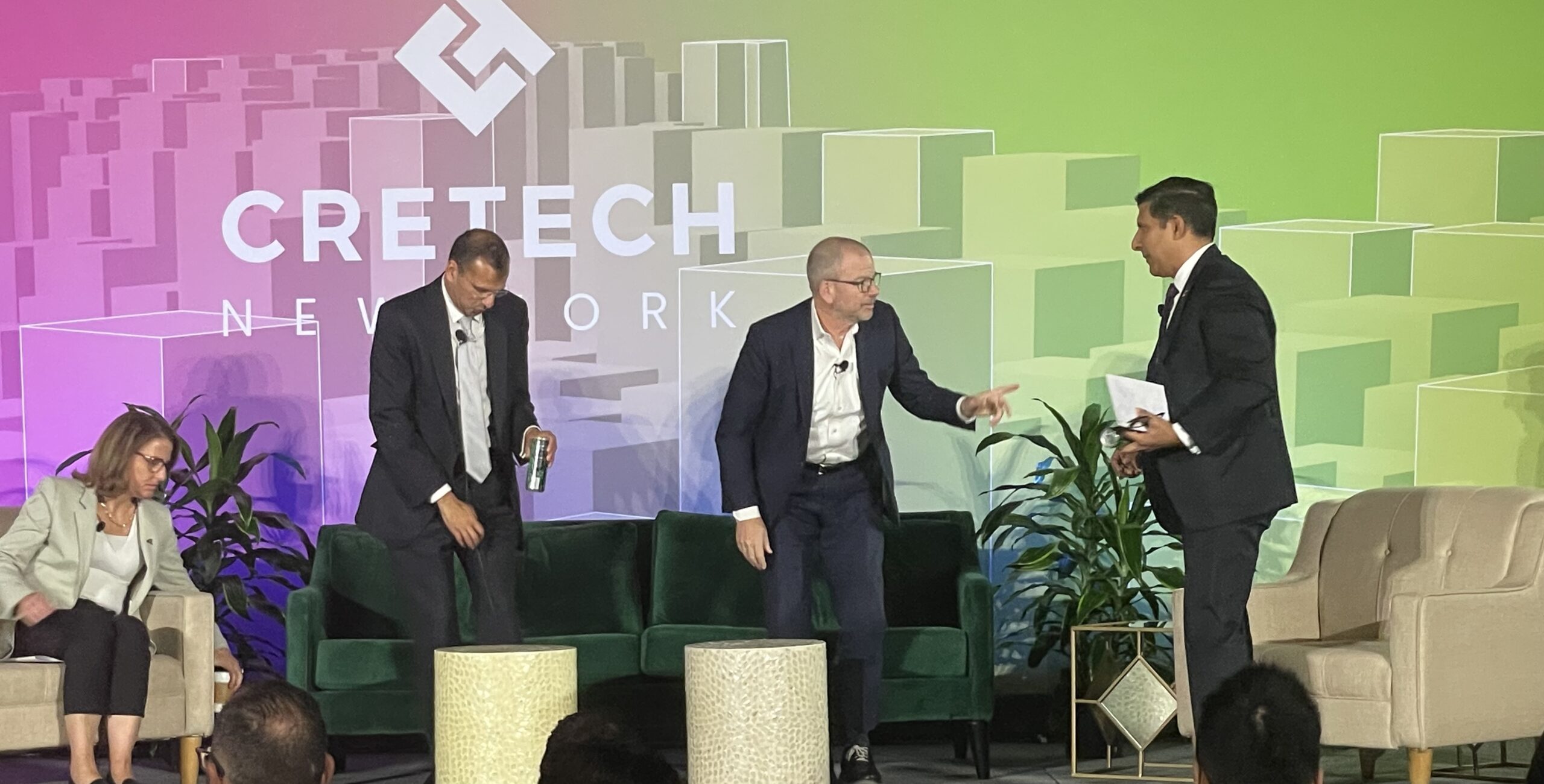CRE Players Need to Seize Opportunities in NYC’s Push for Clean Energy
November 26, 2024

At CREtech New York 2024, Sam Chandan, founding director and professor, Chen Institute for global real estate finance at NYU, led the discussion for a panel focused on how the metro area was embracing climate, hosting state and city authority leaders.
WHAT MAKES NYC STAND OUT
<!–>
Rohit Aggarwala, chief climate officer for NYC, broke down what is making the city stand out compared with other areas in the country when it comes to clean energy.
–> <!–>
“The amount of structure we built around sustainability planning for the last 18 years, since Mayor Bloomberg started in 2006 is really distinct,” he told the panel, while crediting the NYCEDC’s work with NYSERDA (New York State Energy Research and Development Authority) and the Climate Exchange.
–>
“I don’t think there’s another city that has that same constellation of support groups,” Aggarwala said.
<!–>
Andrew Kimball, president and CEO of NYCEDC expanded on the NYCEDC’s partnership with the NYSERDA, which now includes a project under construction in South Brooklyn, which he calls the “most impressive physical manifestation of the green economy.” He also said it will create the “East Coast’s largest offshore wind port,” which will power nearly 500,000 homes and will deliver 810 megawatts of renewable energy.
–> <!–>
CRE MUST ADAPT TO EMISSION REGULATION
–> <!–>
That’s one example of how NYC is moving toward reducing emissions. Another is Local Law 97, which CRE operators will need to adjust to. First enacted in 2019, it requires emission limits on most buildings in the region that exceed 25,000 square feet. It impacts nearly 50,000 buildings. The goal is to cut emissions by 40 percent by 2030 and then 80 percent by 2050.
–> <!–>
NYSERDA is setting an example for other property owners by transitioning to 100 percent electricity.
–> <!–>
“We have all of our buildings now moving all-electric,” Doreen Harris, the authority’s president and CEO said.
–> <!–>
“We’re really trying to get to this point where we have no fossil fuels whatsoever, and some of that is a challenge that many buildings around New York City are facing an HVAC challenge, but that’s an area where we’ve been able to basically take boilers offline and make sure that we’re going all electric.”
–> <!–>
LOCAL LAW 97 COULD CAUSE PROBLEMS BY 2030 RATHER THAN NOW
–> <!–>
For some, Local Law 97 will present a challenge. Those who fail to meet green goals by the May 2025 reporting deadline will be hit with a fine of $268 per ton of carbon emissions. But on a positive note, Aggarwala hasn’t been seeing compliance becoming an issue, although he said he doesn’t have any firm statistics to fully back that up just yet.
–> <!–>
“Based on the annual benchmarking data, we can approximate how many buildings are coming into compliance. And the good news is, over the last seven years, we’ve seen a lot of buildings get into compliance,” an optimistic Aggarwala told the panel.
–> <!–>
“So I am hopeful that next year when we’re going to have the first [set of] data, we’re going to have a relatively small number of buildings that are out of compliance for 2024.
–> <!–>
However, the long-term could be a challenge, as the requirements under Local Law 97 will get tougher by 2030 — so that’s something landlords will need to prepare for. But Aggarwala is optimistic that the J-51 tax credit for apartment renovations will get approved by the New York City Council ahead of the end of the year. If enacted, it will “pay for 80% of the compliance costs for most of the low and middle-value co-ops and condos, which are a large chunk of the housing stock that has to comply,” according to Aggarwala. Most of the residential properties that need to comply with Local Law 97 are in Flushing, Queens, and Coney Island, Brooklyn, he added.
–> <!–>
In addition, Kimball spoke about the $12 to $15 billion economic opportunity in the next half-decade for major lenders to enter New York’s clean energy space.
–> <!–>
“You [will] start [seeing] some domestic banks like Wells [Fargo] looking at it starting to lend. Some [will be] international like Deutsche Bank, [and] others in this space, he said.”
–> <!–>
“Not just because there have been laws like Local Law 97 but because they in their own rulemaking within their private sector companies have said, we need to get off fossil fuels.”
–>
Search
RECENT PRESS RELEASES


